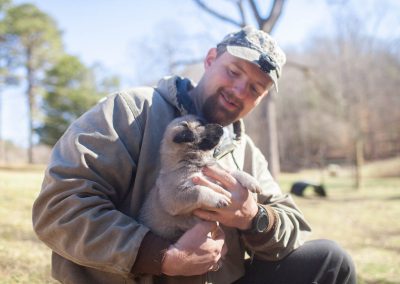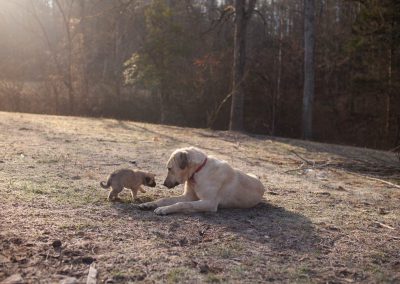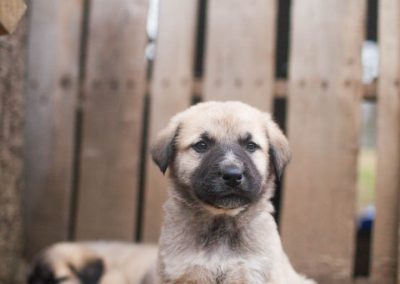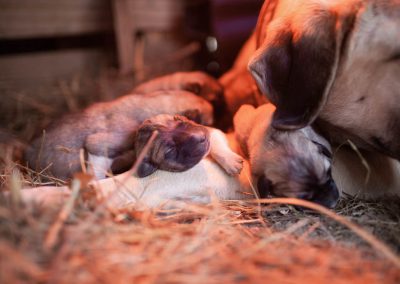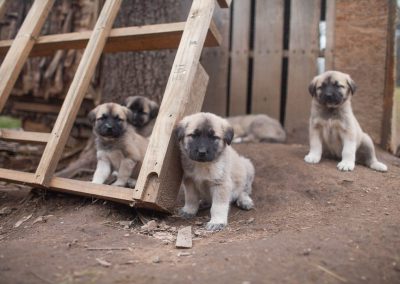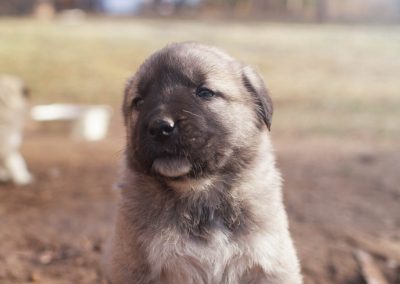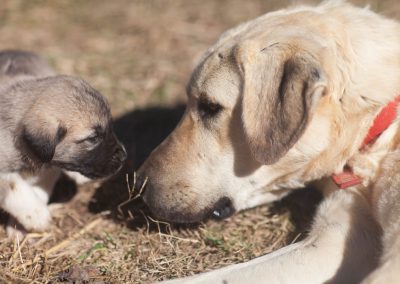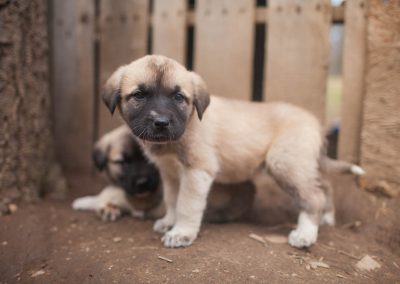Livestock Guardian Dogs
Anatolian x Pyrenees Pups Currently Available!
Anatolian x Pyrenees Puppies For Sale
Sweet, squishy, happy little butterballs – and future superhero Livestock Guardian Dogs are ready for new homes!
🦸♂️🐶🦸♀️
Qualifying families must live on a farm, ranch or homestead and have ample time to spend with their puppy while supervising them around poultry and livestock for at least 18 months while they mature as an official guardian.
Breed and Birth Details:
1/2 Anatolian Shepherd, 1/2 Great Pyrenees.
Born 1/6/2024.
Rehoming Fee: $100
Reserving a Puppy:
— Please fill out this form.
— You will receive a personal reply with answers to any questions and payment information.
— After contacting us, you’ll receive a reservation confirmation and details about choosing an appointment time to pick out your puppy and bring him or her home.
Farm life keeps me busy, so at this time I can’t take calls – but I will message you back as soon as possible!
Girls Available
Price
Boys Available
Lautercreek Farm is currently opening reservations for loving farming, ranching or homesteading families interested in adopting an LGD puppy. This ancient breed combination thrives on large lots with a flock or herd to protect (livestock, poultry and/or children). This is the only environment to which we’ll consider re-homing our LGD puppies, as we want to ensure they’ll live joyful lives doing what they love to do.
If you’re interested in reserving a Lautercreek LGD puppy and meet the farming, ranching or homestead criteria, or if you have any questions, please fill out the form below, and we’ll send an email answering any questions and/or confirmation that you have been added to the priority waiting list.
The puppies will be immunized with core vaccinations, dewormed, and will be imprinted with a miscellany of farm critters such as livestock, poultry and children.
Contact us below to reserve a puppy!
Farm life keeps me busy, so at this time I can’t take calls – but I will message you back as soon as possible!
About The Puppies’ Parents
Both parents are wonderful with children, all of our farm animals, and visitors who have had a proper introduction. Our land is nestled in the Appalachian foothills of Kentucky, teaming with every hungry predator imaginable, and we’re able to leave our barn doors wide open day and night without any concern whatsoever. The puppies were born and raised in the goat barn and are learning the ropes from (in my biased and humble opinion) the greatest dogs who have ever lived.
The Anatolian and Pyrenees breeds – size and dispositions – have suited our family perfectly, and now we’re able to share the same blessing with others! If you’re curious about these dogs or are new to owning a livestock guardian, please see the Q+A section below.
About the Father
Huckleberry Finn is Great Pyrenees. He came from the renowned Shash D. Navajo resort ranch in Arizona, where his ancestors have defended livestock from mountain lions, coyotes, and javelina for multiple generations. The first half of his life was spent protecting goats and children, and he is now protecting (the same but grown) children, poultry, rabbits and cats on my parents’ property in eastern Kentucky.
About the Mother
Our Darya, the mother, is Anatolian Shepherd from a local Kentucky farm. She lives with our goats 24/7, has deterred 100% of predator attempts on our livestock, has saved many of our chickens on numerous occasions from hawks, and is a big sweetheart with us and anybody who has been introduced. She currently guards goats, chickens, cats, and pigs.
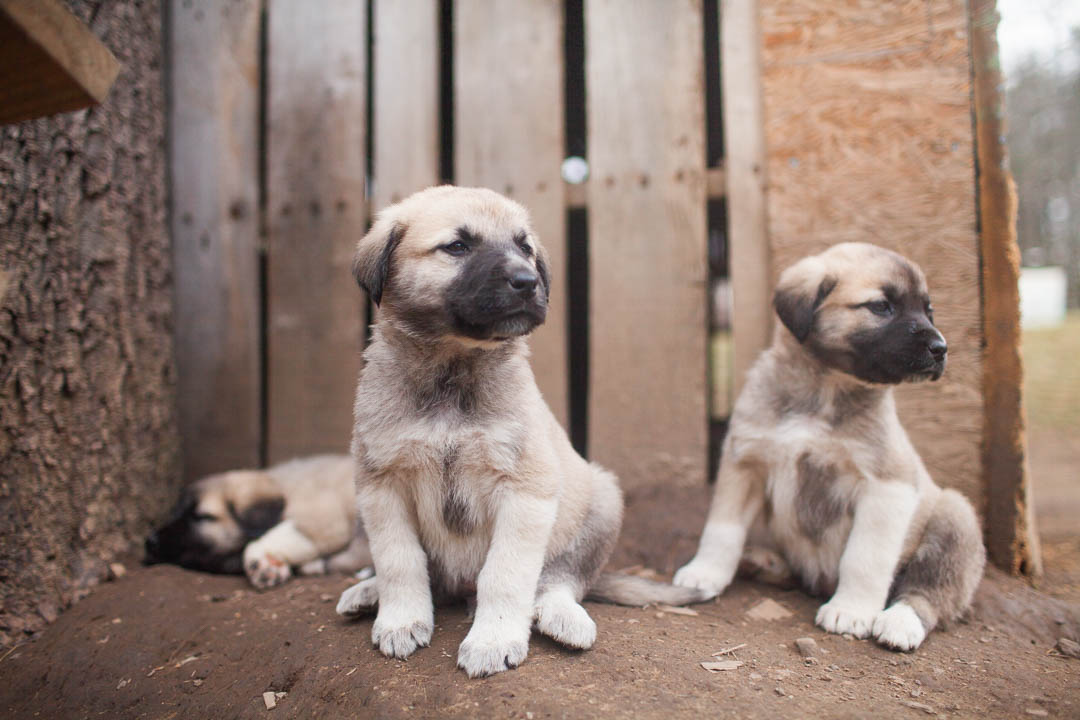
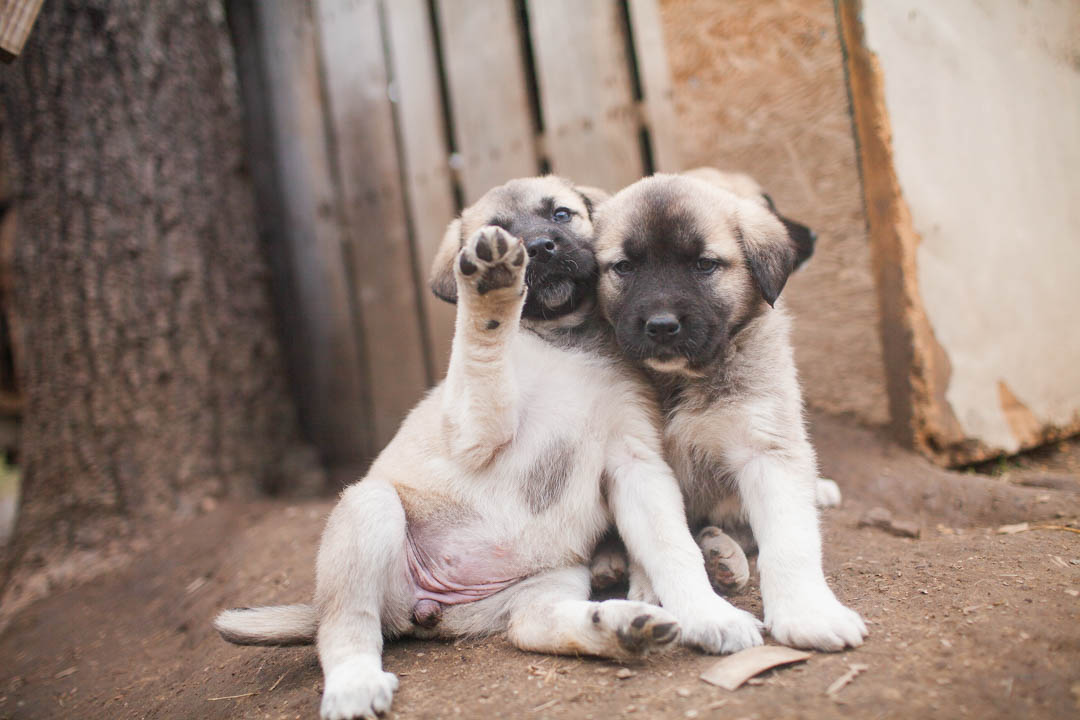
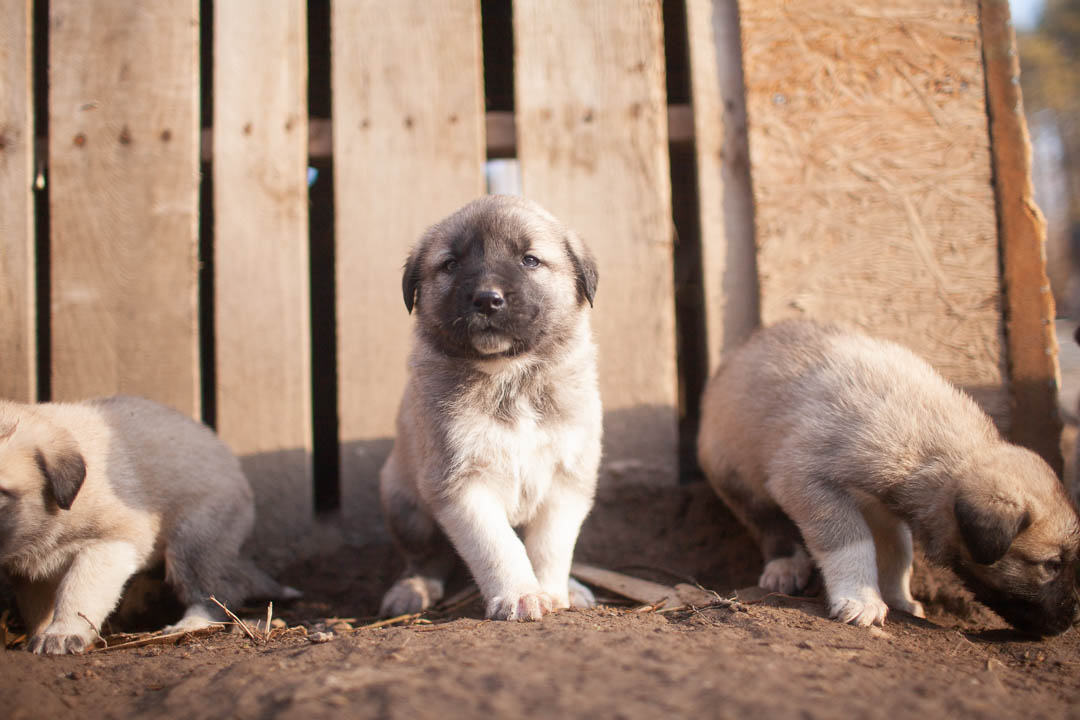
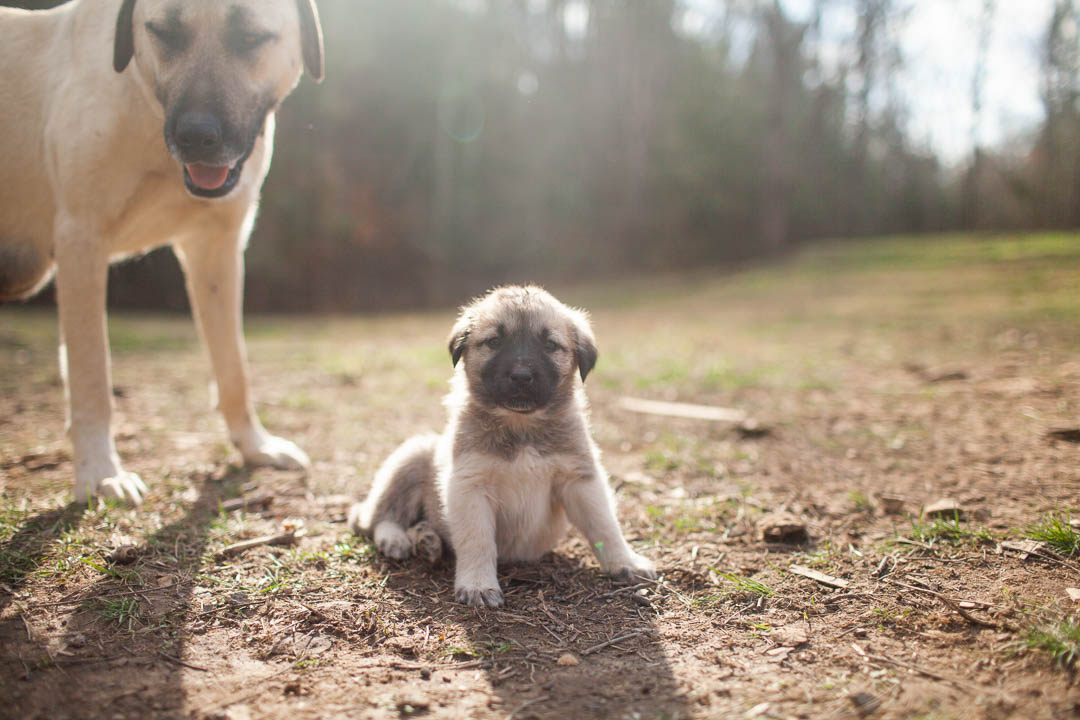
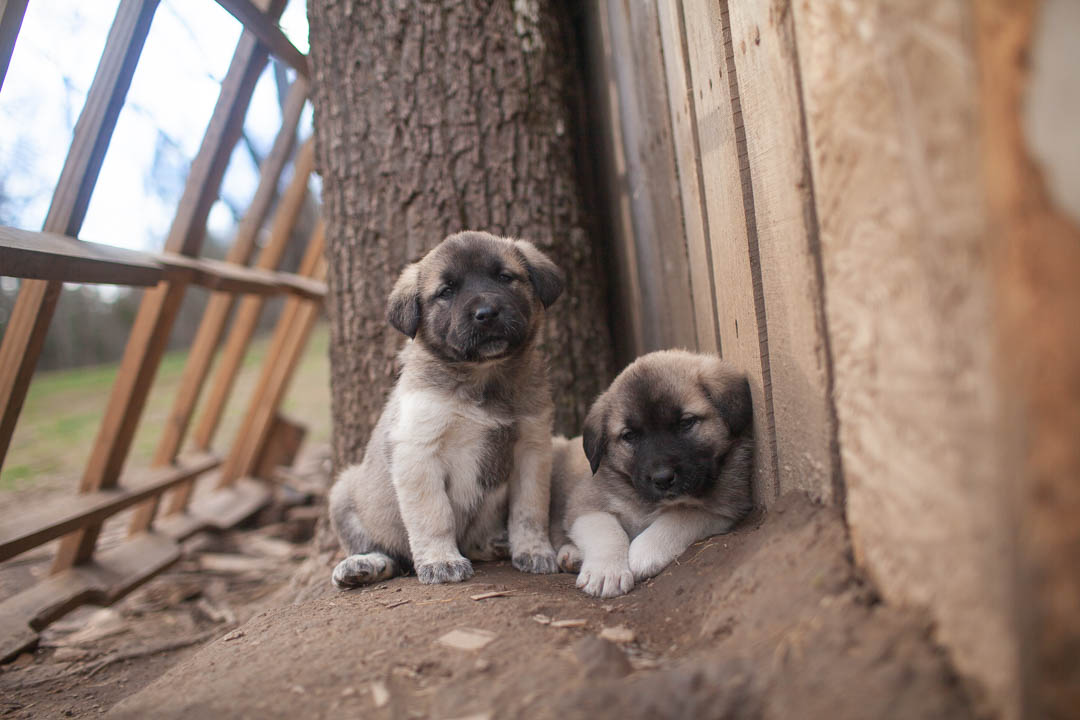
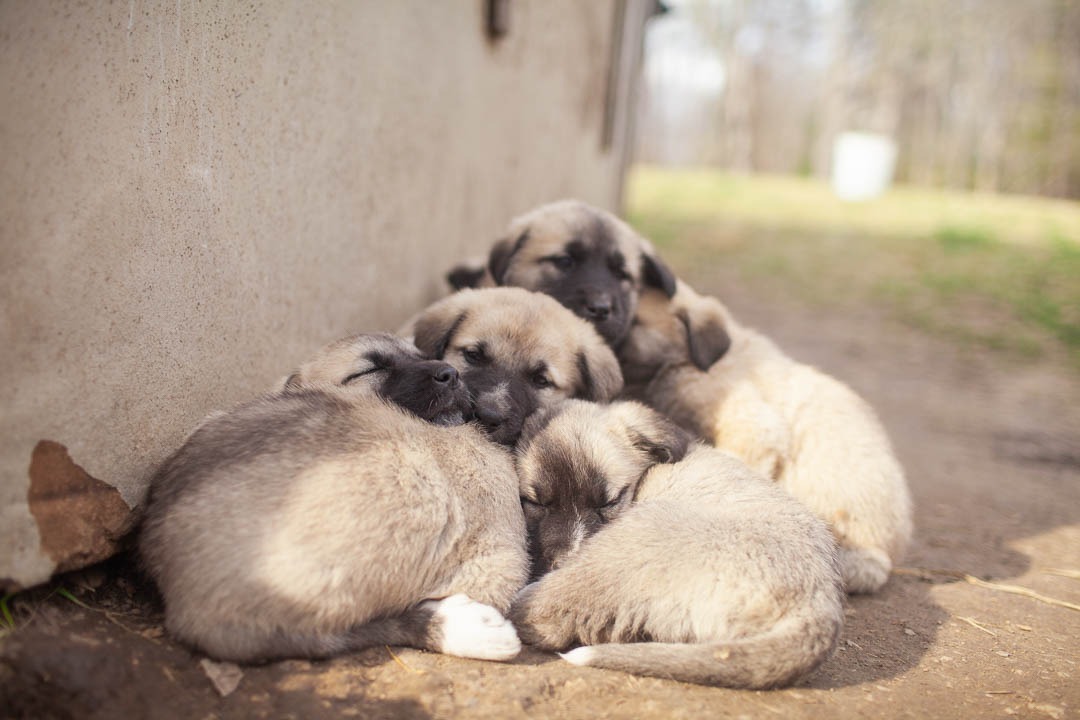
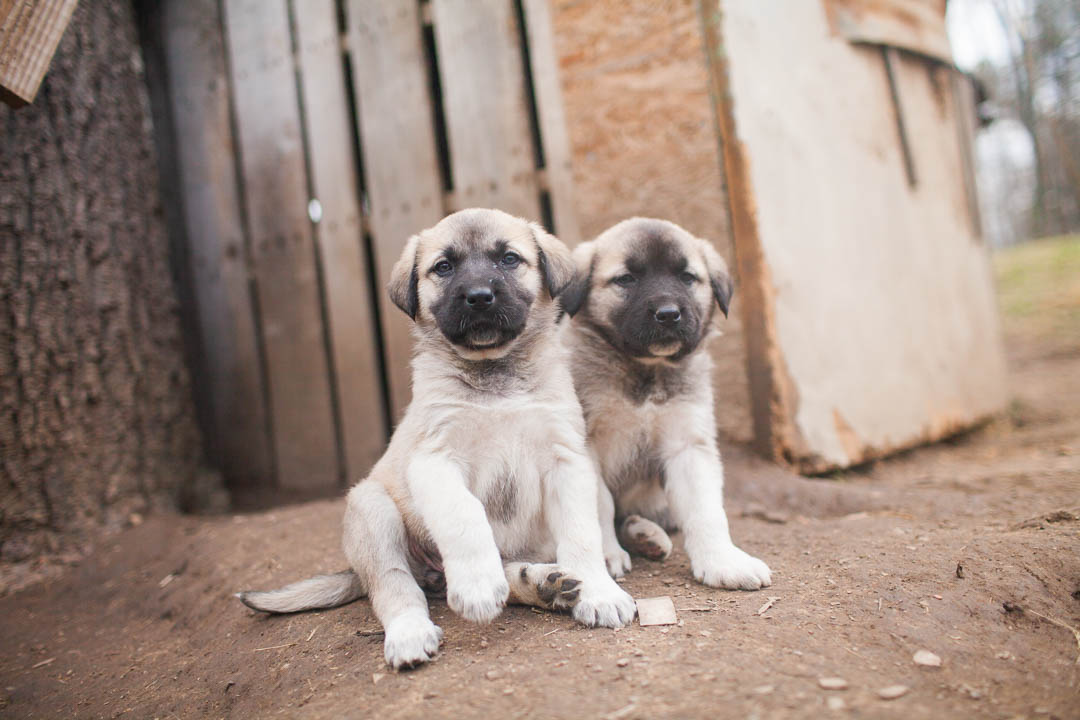
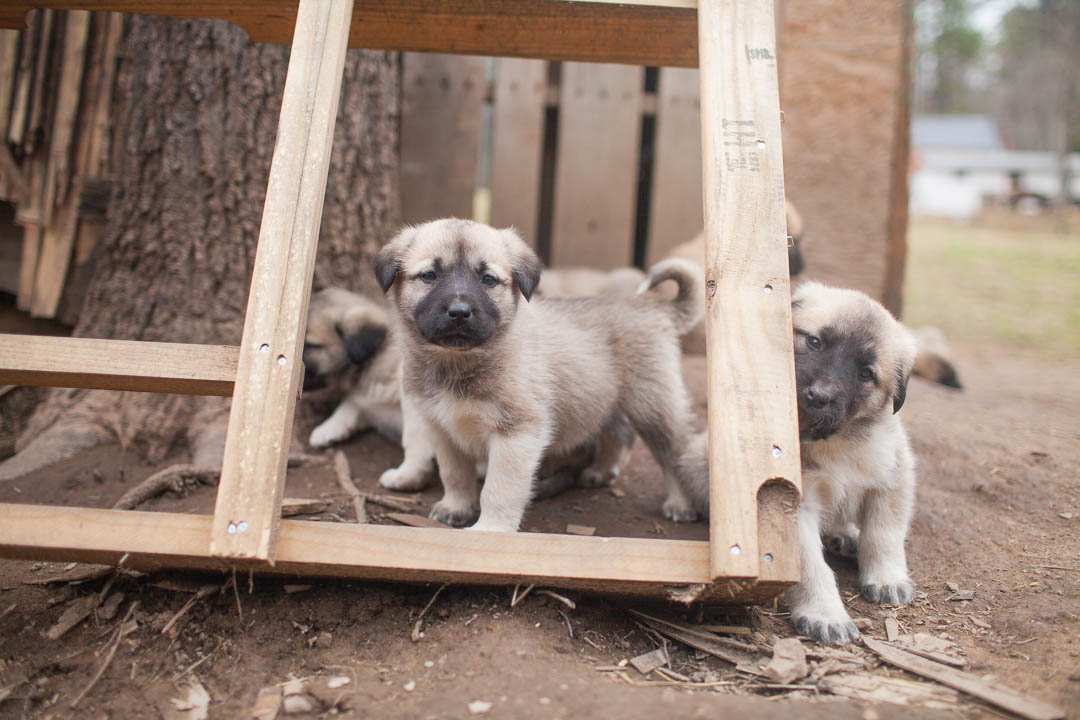
Q + A
What animals have the puppies been exposed to?
The puppies are currently exposed to goats, barn cats, chickens, pigs, and farm children of all ages. When the puppies arrive at their new homes and become settled, they should be comfy and calm around all of these farm critters (as much as an LGD puppy is capable of, that is!). They will still need guidance and “shadowing” while they mature for the first several months (or more, sometimes up to 1 yr+) so they can be lovingly but resolutely reminded and redirected in the case of chasing/ playing roughly with the creatures they’re supposed to protect. This means that they shouldn’t be left unattended with your livestock or poultry, especially in an enclosed area, without supervision. It doesn’t mean they need to be kept separate at all times until they are old enough; it’s actually best that they are kept WITH the flock as much as possible, but only while being monitored, or in a separate area where they can see and not touch the flock.
Most people wait until the two year mark before graduating puppies to “full time professional LGDs”. We tried it earlier with both of the parents (at 14 and 15 months) and they did great.
What kind of shelter do they need? Should they come inside?
These puppies are descended from elite and ancient breeds whose sole purpose for several millennia has been to protect livestock 24/7 and sleep in the barn (or lean to) with them at night. They are not and have never been house dogs. In fact, bringing them inside at night could be detrimental to their training as a livestock guardian dog. If they’re removed from the livestock at night, the ‘bond’ necessary to engage their ancient instincts will be missing, and neither would they be able to protect the flock when predators are most active!
If you’re worried about the cold, remember that Great Pyrenees have been bred for centuries on the cold slopes of the Pyrenees mountains; their undercoat is impervious to extremely cold temperatures – in fact they become most playful when it’s below freezing! Most places in the US will likely be warmer than the Pyrenees mountains.
While Anatolians originated from a more temperate climate, they too are bred to withstand inclement weather.
Heat is often more troublesome to these dogs than the cold. During the summer, provide lots of water and some place to get out of the sun.
How do I feed my puppy?
In bygone days, shepherds fed their LGDs with organs from their livestock, eggs, stale bread soaked in raw milk, and allowed them to chew on carcass bones. Such a diet nowadays would be difficult to replicate. Instead, we are feeding the puppies free-choice high-protein kibble with an abundance of milk and eggs.
We plan on sending you home with enough puppy food to last a couple days. If you want to switch over to a different Large Breed Puppy Food (there are lots to choose from!), you can sprinkle the kibble we provide into the new food for a couple days to help your puppy slowly adjust. We recommend a brand that’s labeled “large breed puppy food” as it typically has a protein mix that will promote slower growth, which is healthier for your puppy’s hips, heart, etc. Great Pyrenees and Anatolians will often take up to 4 years to completely grow and fill out, and the food specifically for larger breeds will allow them to put on weight slowly in such a way that will help them with long term health and longevity.
When feeding your puppy, I highly recommend feeding them kibble out of your hand for a few minutes before giving them their main bowl. This teaches the puppy that the food comes from YOU, and you are the one who has complete control over the food. This is, I believe, the best way to prevent food guarding from people.
Follow the directions on the bag for how much to feed your puppy. If your dog food does not have directions, here’s a handy chart from IAMS Puppy Large Breed Food:
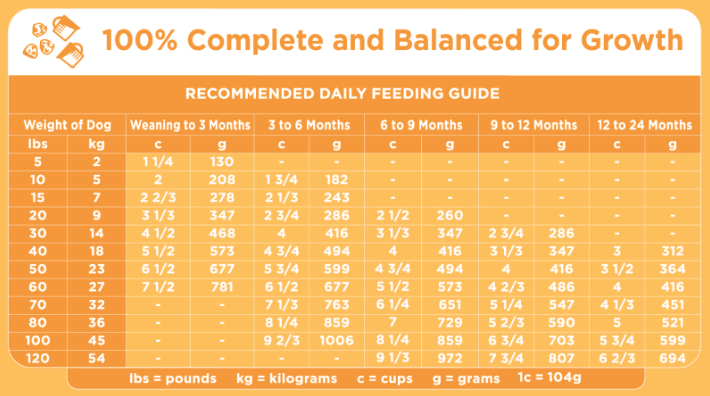
Vaccination Information
Your puppy will be up-to-date on Core vaccines by the time of pickup. At 6 weeks, they will have been vaccinated for distemper, hepatitis/adenovirus, parvovirus, and parainfluenza. This is a combination vaccine abbreviated as either DAPP, DHP+, DHPP, or similar. After they are brought home (unless they are still in our care), they must be given this vaccine again at 10-12 weeks, and again at 14-16 weeks to complete immunity. If you are confident in administering vaccines yourself, you can purchase this 5-way vaccine for a low price at Tractor Supply Company or Jefferspet.
The rabies vaccine must be given at 14-16 weeks, one year after, and every 3 years thereafter.
It is up to your discretion if you want to give your puppy additional vaccines.
Will the puppies be dewormed?
They will be dewormed with fenbendazole (Safeguard) starting at 5 weeks and every 2 weeks thereafter until they are adopted. They must be given one additional dose 2 weeks after pickup (at 12 weeks old), while under your care. For this last dose, we will provide you with a syringe of dewormer. To administer, simply mix the contents of the syringe with a little milk, and they will lap it right up!
Are LGDs safe around children?
Darya and Huckleberry (the parents of these puppies) are interacting with children constantly, and I’ve never seen dogs more gentle or patient. In fact, the reason why my parents got into LGDs was to protect their toddlers from wild animals in Arizona.
Keep in mind, however, that LGD puppies are still puppies; they will jump and chew like any young dog. Be prepared to keep children and the elderly safe from enthusiastic 60+ pound 7 month old puppies trying to make friends or play. Given the proper guidance, most LGDs mellow out as they mature. They are always happy to greet trusted humans and seek their affection before returning to their charges, but they shouldn’t try to give you a bear hug!
It’s often more difficult to teach rowdy children to be gentle with the dog; if you instruct your child to be gentle – e. g. no kicking, hitting, pulling, or generally hurting the dog in any way, you will be rewarded with a wonderful and loyal dog who will defend them with his life and limb.
Keep in mind that in most homesteading circumstances, they will consider your child as one of their ‘charges’, it’s wise to make sure any visiting children do not aggressively play with your child near the LGD in case the dog misinterprets any squealing and yelling as your child being hurt, and jumps to his or her defense. Although we have never dealt with any dangerous situations regarding any children, our dogs have barked at (and terrified) guests who have not been introduced by us. A proper introduction (you petting your dog while talking to a visitor, for example) is important and triggers them put their literal “guard” down.
Do they roam?
Similar to wolves, lions, and many other wild creatures that live in groups, LGDs will establish ‘territories’ to patrol each and every single day. Unfortunately, their chosen ‘territory’ probably won’t match your property border! Some breeds establish larger territories than others. Unfixed male dogs in particular are inclined to patrol wide areas.
Unless you have lenient neighbors or a huge property (My parents keep their Great Pyrenees on their 120+ acres without a fence, and the neighbors still catch glimpses of them!), I would recommend a good fence. We’ve had great success with electric fences, and they are relatively cheap and simple to install. If you decide to go the electric fence route, your puppy has already been trained to respect it.
Should I get an LGD as a family pet?
These dogs are an ancient breed combination which thrive on large lots with a flock or herd to protect (livestock, poultry and/or children). Due to their size, energy, and intelligence, they will suffer in the average city environment. You’ll probably suffer too as a result of their pent-up energy! They are not apartment dogs, or postage-stamp backyard dogs. For this reason, we will only allow puppy placement with farms/homesteads.
However, a Livestock Guardian Dog can also be an excellent Family Guardian Dog, particularly if you have a large property. In fact, that’s why my parents first got the Great Pyrenees breed in Arizona: they wanted a dog that could protect their toddlers from coyotes and javelinas (those are pig-like animals that travel in packs, and just happen to have the proportionally largest fangs of any mammal – the flesh and blood version of a R.O.U.S) and mountain lions on their 30-acre property.
Do the dogs bark a lot?
Yes, they do bark, and sometimes they bark quite a lot. Livestock Guardian Dogs are primarily a predator deterrent; they protect livestock by barking at anything they smell, hear, or see that is not typically in their environment. If they silently attacked every predator that came along, they would be constantly injured (though I have no doubt that they would win in most situations). Instead, they wisely warn the predator by barking. When predators hear a dog barking, they’ll usually choose to retreat without a fight from the territory that appears to be protected by the dog. If the predator decides to ignore the barking and cross the property anyway, then the dog will confront it and attack.
Barking is another reason why I recommend having over 10 acres for an LGD: any less than 10 acres and your dog might be barking close to your house. And due to the nocturnal nature of predators, most of that barking will likely be done at night. If you have less than 10 acres, be prepared to be lulled to sleep with intermittent barking throughout the night.
Fortunately, most Livestock Guardian Dogs do not nuisance bark at anything and everything. Depending on the personality of the dog, they usually only bark when they have a good reason to, and stop when the danger has passed. The parents of our puppies are particularly good at barking only when there is a threat. We never scold our dogs for barking, even if it seems like they are barking at nothing. We want them to bark when they see fit – when they hear things we cannot hear.
Can LGDs guard poultry?
Yes, but it’s more difficult to train the dog to bond to poultry than it is to larger animals. The naturally flighty nature and small size of most poultry makes the puppy less likely to be automatically submissive as he would be to goats or sheep.
The same training principles I outlined above still apply, but be prepared for more attention, training, and persistence than usual, and expect occasional frustrations and setbacks. These breeds have a naturally low prey drive, but young puppies (especially) need a lot of guidance to realize chickens are not play toys. Half of our LGDs have needed reminders and constant supervision around poultry for the first two years, and the other half did not need any reminders after they outgrew their puppy phase. Interestingly, some of the LGDs that needed the most guidance at first have grown to be the most gentle protective guardians of poultry.
Should I get two puppies at once?
Opinions vary wildly on this topic. Overall, I prefer to raise one puppy at a time. While two puppies make good playmates for each other— which could potentially keep them from rough-housing with the animals— that is exactly the problem: they’re more likely to bond with each other than with the livestock.
Furthermore, it’s easier to supervise/train one puppy at a time rather than two at once.
However, if you have severe predator problems, you may want to consider getting two pups at the same time— just be prepared for a bit more attention and effort than usual.
Do I need a fence?
Similar to wolves, lions, and many other wild creatures that live in groups, LGDs will establish ‘territories’ to patrol each and every single day. Unfortunately, their chosen ‘territory’ probably won’t match your property border! Depending on the dog, a territory could even be a mile wide. So unless you have lenient neighbors or a huge property (My parents keep their Great Pyrenees on their 120+ acres without a fence, and the neighbors still catch glimpses of them!), I would recommend a good fence to teach the dog where the boundary is. We’ve had great success with electric fences, and they are relatively cheap and simple to install. If you decide to go the electric fence route, your puppy has already been trained to respect it.
If you follow our training recommendations below, you will need a small pen/fenced off area in the livestock area for the puppy to stay in. This pen can be as simple as two cattle panels zip-tied together.
How do I train my LGD?
These puppies are the descendants of dogs who were bred to work by instinct. They will naturally want to protect whatever is in their charge, whether their charges are livestock or children. However, superhero LGD puppies are still puppies and will playfully rough-and-tumble their way through puppy-hood; it’s important to correct any play behaviors directed toward livestock when they are still young if you want to set up the dog for success. Given the proper training and supervision, you can expect the dog to be a reliable Livestock Guardian Dog by 2 years of age, if not sooner.
If you want your puppy to guard livestock, keep him WITH that type of livestock as much as possible, even when you’re not there. To do this, build a pen in the pasture/barn where the livestock lives where the puppy can stay and see (but not touch) the livestock. This pen can be as simple as two cattle panels zip-tied together. When you are feeding the animals, let the puppy out of the pen to interact with them, and watch closely: give him verbal praise and pets for walking calmly among the stock, and lovingly but firmly reprimand if he or she frightens or tries to play with them. Our version of training LGDs has only involved curbing playful puppy behavior around livestock. It is not a complicated process, as these dogs have an innate motivation to eventually be extremely calm and protective. Aside from anomalies and outliers, they will always fit their ancient personality profile as they mature under the proper circumstances. Eventually, you could graduate to staking the puppy out in the pasture. The goal is for the puppy to learn that the livestock is family, and the pasture where they live is home. Extra precautions must be taken around the pup’s first season around birthing livestock.
Depending on the puppy’s personality and the frequency of his training, he could begin the graduation process of becoming a full-time Livestock Guardian Dog by 18-24 months of age. We spend a lot of time spying on our dogs while they think they’re alone, to curb any inappropriate playfulness or chasing. Soon, your puppy will be fully reliable around the stock and will be able to live among them 24/7 without supervision.
I also recommend giving your puppy some basic training, such as walking on a leash or staying calm in the car so you are able to transport him easily to places like the vet. Commands such as “stay”, “come”, and “leave it” are also extremely helpful, but keep in mind that these dogs are not Labradors or Golden retrievers; Anatolians and Pyrenees are independent thinkers who have little inclination to please with tricks and obedience stunts. They are more than capable, but these dogs have been bred to think and act for themselves when the shepherd is absent. In short, they are too intelligent!
Food guarding is one of the biggest problems of LGDs because they are programmed to protect what they view as theirs. To prevent this, make sure that the dog knows that the food comes from you. Do this by hand-feeding the puppy (literally feeding him dog food out of your palm) for a few minutes before giving him his main bowl, and make a show of putting the food in his bowl.
If the puppy is going to interact with strangers/other dogs constantly, make sure he starts interacting with them at a young age. Expose him to all the regular happenings on the farm so that he learns what is normal and what isn’t. I also recommend early and regular exposure to children and other family members. If the dog is going to stay with the livestock, however, those interactions should happen in the pasture with the livestock. If he’s allowed to come into the backyard to socialize with people more often than livestock, he may choose to bond to the humans instead of the animals and will not want to stay with them. This might not be a bad thing if you want a ‘People’ Guardian Dog who doesn’t chase animals, but for those who want a livestock guardian dog, this would be detrimental.
One word of warning: do not ever mistreat these dogs or aggressively punish them. When they trust and view you as an authority and source of affection, they will be extremely sensitive and responsive to calm and firm guidance. As stated above, these dogs are intelligent. If they are abused, they will remember and they will never trust you again.
What is a 'farming, homesteading or ranching' family?
These puppies are an ancient breed combination which thrive on large lots with a flock or herd to protect (livestock, poultry and/or children). Due to their size, energy, and intelligence, they will suffer in the average city environment. You’ll probably suffer too as a result of their pent-up energy! They are not apartment dogs, or postage-stamp backyard dogs; if you want your puppy to be happy and healthy, I recommend that you at least have an acre for them to protect, and preferably 10+ acres. I’d also recommend a fence or they’ll try to protect your neighbors too!
How do you prevent food guarding?
When feeding your puppy, I highly recommend feeding them kibble out of your hand for a few minutes before giving them their main bowl. This teaches the puppy that the food comes from you, and you are the one who has complete control over the food. This is, I believe, the best way to prevent food guarding from people.
Can I keep an LGD on a small property?
These puppies are an ancient breed combination which thrive on large lots with a flock or herd to protect (livestock, poultry and/or children). Due to their size, energy, and intelligence, they will suffer in the average city environment. You’ll probably suffer too as a result of their pent-up energy! They are not apartment dogs, or postage-stamp backyard dogs; if you want your puppy to be happy and healthy, I recommend that you at least have an acre for them to protect, and that’s on the small side. I’d also recommend a fence or they’ll try to protect your neighbors too!
What is an LGD?
An LGD is a Livestock Guardian Dog. They are breeds that have been trained and bred for centuries to protect livestock and families from predators such as wolves, lions, bears, lynx, and even two-footed predators. This training and breeding, refined in the most rugged and remote parts of the earth, lingers on in breeds such as Great Pyrenees, Anatolian Shepherds, Maremmas, Karakachans, and a few others.
These dogs are distinctly different from Border Collies, Labradors and other working dogs in that they are independent thinkers who have little inclination to please with tricks and obedience stunts. They are more than capable, but they would rather do their own thing. This is not a negative trait. These dogs have centuries of selective behaviors and honed lineage lending to independent decision making skills that make them exceptionally capable of protecting their flock. You may not have the satisfaction of watching him or her roll over and beg on command, but you will have the satisfaction of knowing your dog will have your back – and that of your farm animals – in difficult situations.
Why does my puppy have 2 dewclaws on one paw?
Don’t be alarmed if you find that your puppy has two dewclaws on one paw – double dewclaws is a trait inherited from the Great Pyrenees breed. In fact, having 2 dewclaws is a requirement in the Great Pyrenees AKC standard; and frequently the absence of double dewclaws in Great Pyrenees means that it is not purebred. Since our puppies are half Great Pyrenees, some of them have the characteristic double dewclaws.
How do I reserve a puppy?
Reserving a Puppy:
Please fill out this form. You will receive a personal reply with answers to any questions, and details about choosing an appointment time to pick out your puppy and bring him or her home. Payment ($200) is due on pickup.
Farm life keeps me busy, so at this time I can’t take calls – but I will message you back as soon as possible!
Do they need grooming?
Generally LGDs do not need grooming; in most cases, it’s counterproductive. Anatolian Shepherds have short hair and naturally shed. Since short hair is a dominant gene, all of our current puppies will have short hair like their Anatolian mother.
Though Great Pyrenees are a long-haired breed, they do not need haircuts, even in the height of summer. It may not seem like it, but their fur protects them from both heat and cold thanks to their double coat. Cutting into this double layer can damage fur growth for the rest of their lives. In short, my advice is to never shave your Great Pyrenees; instead, provide him with a place to get out of the sun and plentiful amounts of water and he will be just fine.
There is an exception to the shaving rule, however: on occasion, mats may form around the rump, paws, and nape of a Great Pyrenees, and these will have to be trimmed off. This light trimming will not damage the coat.
Should I get a male or a female?
The majority of LGD and guard dog experts agree that there is no difference between the guarding instincts of male and female guard dogs, saying rather that it depends more on the individual personality of the dog than on the gender. In my experience, I have found this to be true.
However, if you already own a dog— even if it’s just a house dog— I would recommend choosing the opposite gender. This is because male and female pairs tend to get along more than same-gender dogs, which is especially important if you’re planning to keep a guarding pair working together.
How many guardian dogs do I need?
This depends on your predator pressure, the size of your land, and the amount of animals you have. If you haven’t had any losses yet, your local predators are mostly small, and you’re likely interested in a Livestock Guardian Dog as a precaution, starting with one dog would be enough to keep your animals safe.
If you have coyotes in your area, it’s wise to have at least two— if not more— LGDs working together. To keep even larger predators (such as wolves or mountain lions) from wanting to engage, you may need three, four, or even more dogs.


